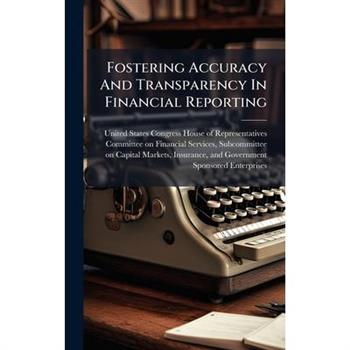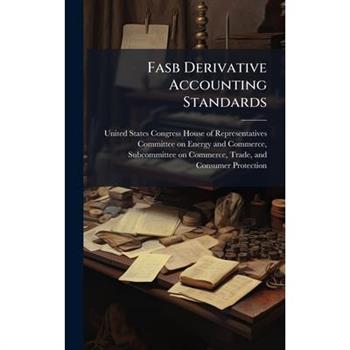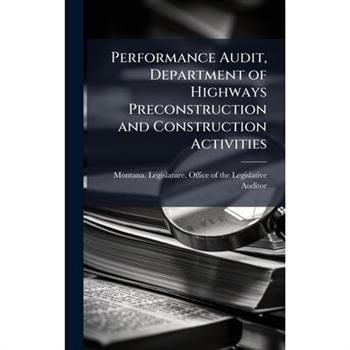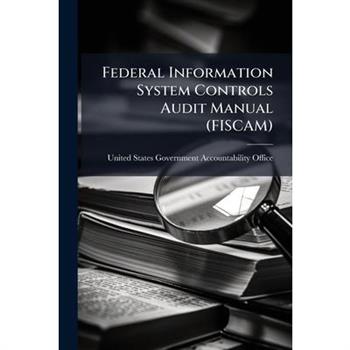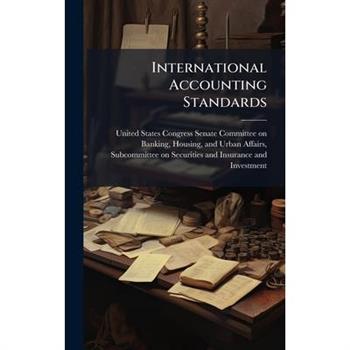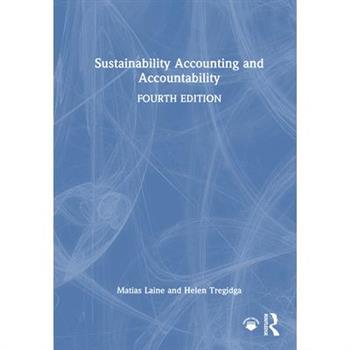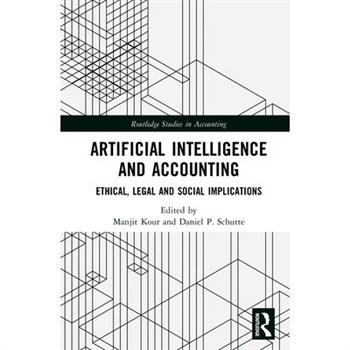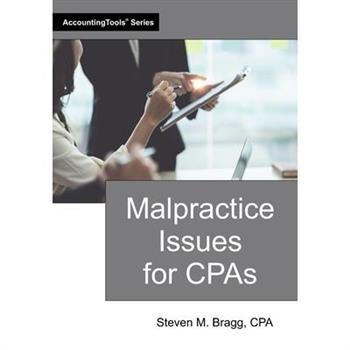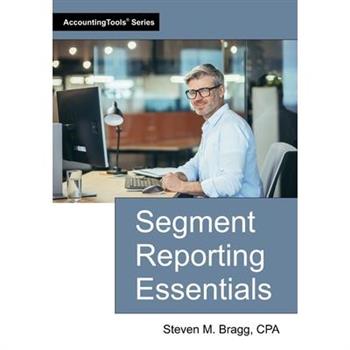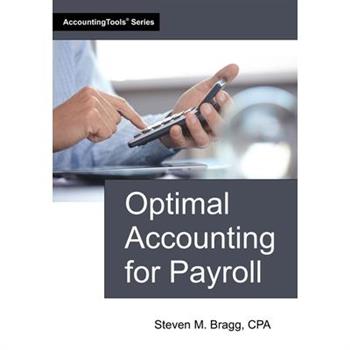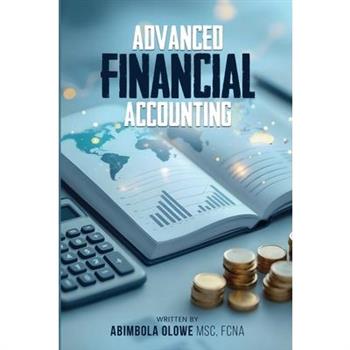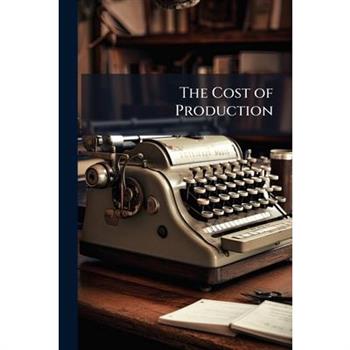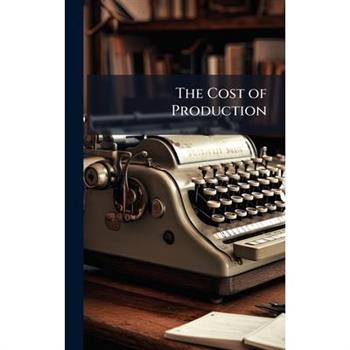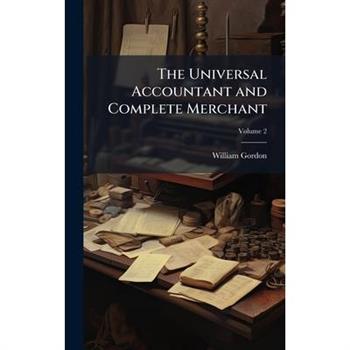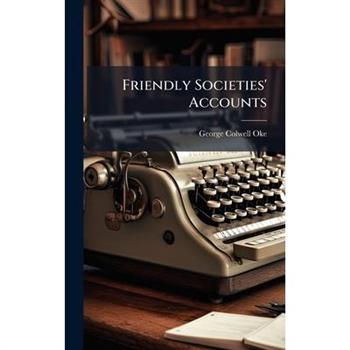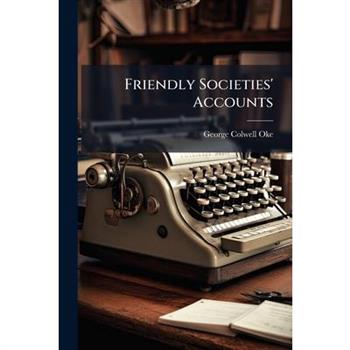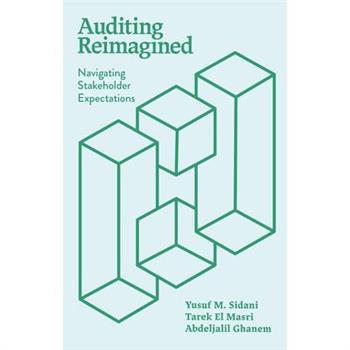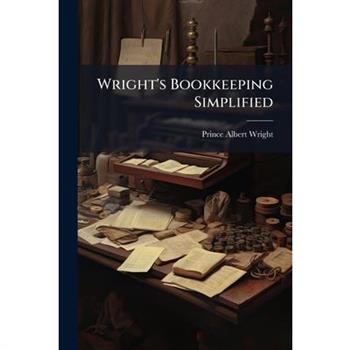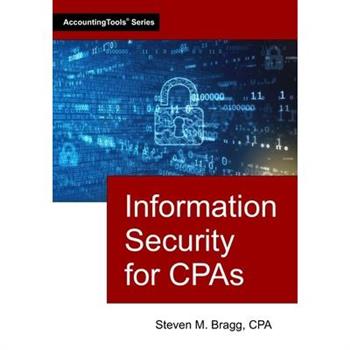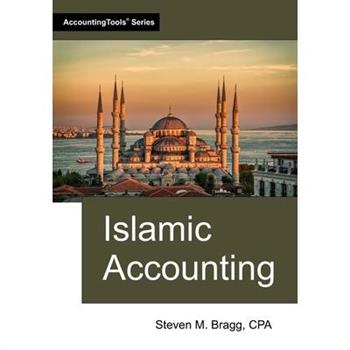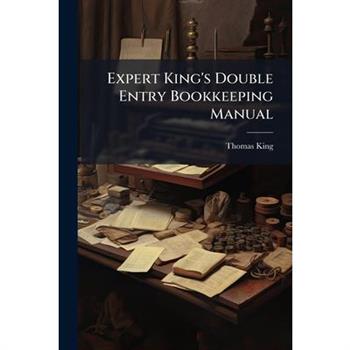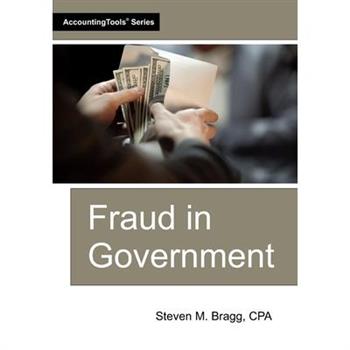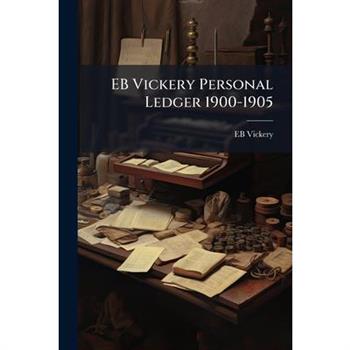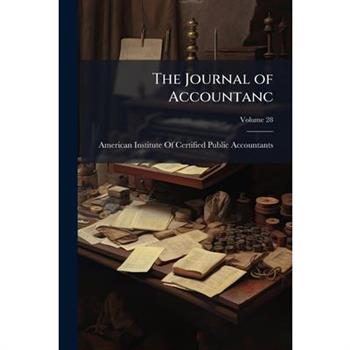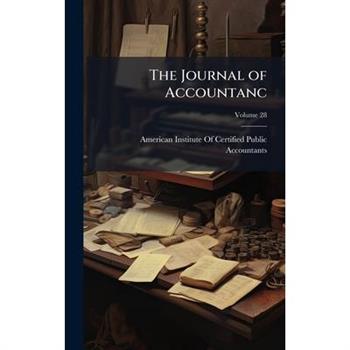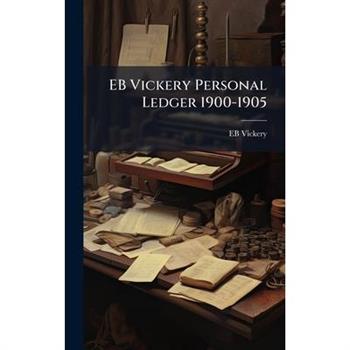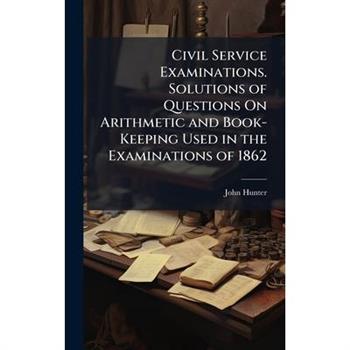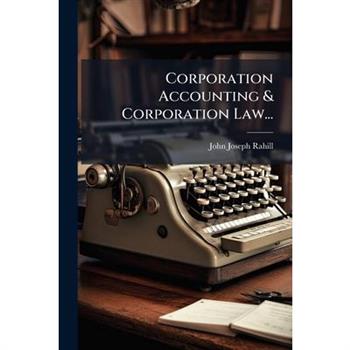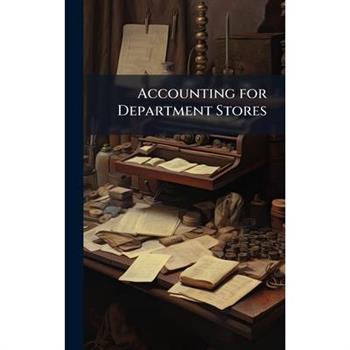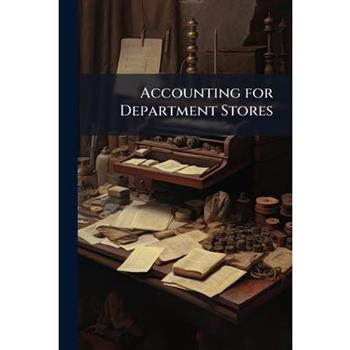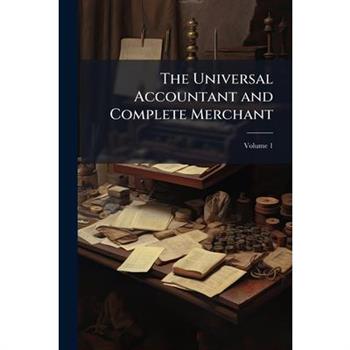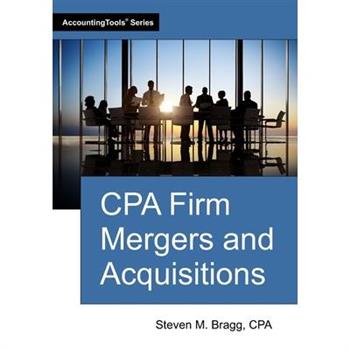Accounting For Business Combinations
The BiblioGov Project is an effort to expand awareness of the public documents and records of the U.S. Government via print publications. In broadening the public understanding of government and its work, an enlightened democracy can grow and prosper. Ranging from historic Congressional Bills to the most recent Budget of the United States Government, the BiblioGov Project spans a wealth of government information. These works are now made available through an environmentally friendly, print-on-demand basis, using only what is necessary to meet the required demands of an interested public. We invite you to learn of the records of the U.S. Government, heightening the knowledge and debate that can lead from such publications.This work has been selected by scholars as being culturally important, and is part of the knowledge base of civilization as we know it. This work was reproduced from the original artifact, and remains as true to the original work as possible. Therefore, you will see the original copyright references, library stamps (as most of these works have been housed in our most important libraries around the world), and other notations in the work.This work is in the public domain in the United States of America, and possibly other nations. Within the United States, you may freely copy and distribute this work, as no entity (individual or corporate) has a copyright on the body of the work.As a reproduction of a historical artifact, this work may contain missing or blurred pages, poor pictures, errant marks, etc. Scholars believe, and we concur, that this work is important enough to be preserved, reproduced, and made generally available to the public. We appreciate your support of the preservation process, and thank you for being an important part of keeping this knowledge alive and relevant.
Fostering Accuracy And Transparency In Financial Reporting
The BiblioGov Project is an effort to expand awareness of the public documents and records of the U.S. Government via print publications. In broadening the public understanding of government and its work, an enlightened democracy can grow and prosper. Ranging from historic Congressional Bills to the most recent Budget of the United States Government, the BiblioGov Project spans a wealth of government information. These works are now made available through an environmentally friendly, print-on-demand basis, using only what is necessary to meet the required demands of an interested public. We invite you to learn of the records of the U.S. Government, heightening the knowledge and debate that can lead from such publications.This work has been selected by scholars as being culturally important, and is part of the knowledge base of civilization as we know it. This work was reproduced from the original artifact, and remains as true to the original work as possible. Therefore, you will see the original copyright references, library stamps (as most of these works have been housed in our most important libraries around the world), and other notations in the work.This work is in the public domain in the United States of America, and possibly other nations. Within the United States, you may freely copy and distribute this work, as no entity (individual or corporate) has a copyright on the body of the work.As a reproduction of a historical artifact, this work may contain missing or blurred pages, poor pictures, errant marks, etc. Scholars believe, and we concur, that this work is important enough to be preserved, reproduced, and made generally available to the public. We appreciate your support of the preservation process, and thank you for being an important part of keeping this knowledge alive and relevant.
Fasb Derivative Accounting Standards
The BiblioGov Project is an effort to expand awareness of the public documents and records of the U.S. Government via print publications. In broadening the public understanding of government and its work, an enlightened democracy can grow and prosper. Ranging from historic Congressional Bills to the most recent Budget of the United States Government, the BiblioGov Project spans a wealth of government information. These works are now made available through an environmentally friendly, print-on-demand basis, using only what is necessary to meet the required demands of an interested public. We invite you to learn of the records of the U.S. Government, heightening the knowledge and debate that can lead from such publications.This work has been selected by scholars as being culturally important, and is part of the knowledge base of civilization as we know it. This work was reproduced from the original artifact, and remains as true to the original work as possible. Therefore, you will see the original copyright references, library stamps (as most of these works have been housed in our most important libraries around the world), and other notations in the work.This work is in the public domain in the United States of America, and possibly other nations. Within the United States, you may freely copy and distribute this work, as no entity (individual or corporate) has a copyright on the body of the work.As a reproduction of a historical artifact, this work may contain missing or blurred pages, poor pictures, errant marks, etc. Scholars believe, and we concur, that this work is important enough to be preserved, reproduced, and made generally available to the public. We appreciate your support of the preservation process, and thank you for being an important part of keeping this knowledge alive and relevant.
Performance Audit, Department of Highways Preconstruction and Construction Activities
This 1982 performance audit by the Montana Legislative Auditor examines the preconstruction and construction activities of the Department of Highways. The report provides a detailed analysis of the department's efficiency and effectiveness in managing highway projects. It offers valuable insights into the processes, challenges, and potential areas for improvement in government infrastructure projects. Though focused on Montana's highway department, the audit's findings remain relevant to understanding best practices in project management and public sector accountability.This work has been selected by scholars as being culturally important, and is part of the knowledge base of civilization as we know it. This work was reproduced from the original artifact, and remains as true to the original work as possible. Therefore, you will see the original copyright references, library stamps (as most of these works have been housed in our most important libraries around the world), and other notations in the work.This work is in the public domain in the United States of America, and possibly other nations. Within the United States, you may freely copy and distribute this work, as no entity (individual or corporate) has a copyright on the body of the work.As a reproduction of a historical artifact, this work may contain missing or blurred pages, poor pictures, errant marks, etc. Scholars believe, and we concur, that this work is important enough to be preserved, reproduced, and made generally available to the public. We appreciate your support of the preservation process, and thank you for being an important part of keeping this knowledge alive and relevant.
Federal Information System Controls Audit Manual (FISCAM)
The BiblioGov Project is an effort to expand awareness of the public documents and records of the U.S. Government via print publications. In broadening the public understanding of government and its work, an enlightened democracy can grow and prosper. Ranging from historic Congressional Bills to the most recent Budget of the United States Government, the BiblioGov Project spans a wealth of government information. These works are now made available through an environmentally friendly, print-on-demand basis, using only what is necessary to meet the required demands of an interested public. We invite you to learn of the records of the U.S. Government, heightening the knowledge and debate that can lead from such publications.This work has been selected by scholars as being culturally important, and is part of the knowledge base of civilization as we know it. This work was reproduced from the original artifact, and remains as true to the original work as possible. Therefore, you will see the original copyright references, library stamps (as most of these works have been housed in our most important libraries around the world), and other notations in the work.This work is in the public domain in the United States of America, and possibly other nations. Within the United States, you may freely copy and distribute this work, as no entity (individual or corporate) has a copyright on the body of the work.As a reproduction of a historical artifact, this work may contain missing or blurred pages, poor pictures, errant marks, etc. Scholars believe, and we concur, that this work is important enough to be preserved, reproduced, and made generally available to the public. We appreciate your support of the preservation process, and thank you for being an important part of keeping this knowledge alive and relevant.
Federal Information System Controls Audit Manual (FISCAM)
The BiblioGov Project is an effort to expand awareness of the public documents and records of the U.S. Government via print publications. In broadening the public understanding of government and its work, an enlightened democracy can grow and prosper. Ranging from historic Congressional Bills to the most recent Budget of the United States Government, the BiblioGov Project spans a wealth of government information. These works are now made available through an environmentally friendly, print-on-demand basis, using only what is necessary to meet the required demands of an interested public. We invite you to learn of the records of the U.S. Government, heightening the knowledge and debate that can lead from such publications.This work has been selected by scholars as being culturally important, and is part of the knowledge base of civilization as we know it. This work was reproduced from the original artifact, and remains as true to the original work as possible. Therefore, you will see the original copyright references, library stamps (as most of these works have been housed in our most important libraries around the world), and other notations in the work.This work is in the public domain in the United States of America, and possibly other nations. Within the United States, you may freely copy and distribute this work, as no entity (individual or corporate) has a copyright on the body of the work.As a reproduction of a historical artifact, this work may contain missing or blurred pages, poor pictures, errant marks, etc. Scholars believe, and we concur, that this work is important enough to be preserved, reproduced, and made generally available to the public. We appreciate your support of the preservation process, and thank you for being an important part of keeping this knowledge alive and relevant.
A Review Of Fasb Action Post-enron And Worldcom
The BiblioGov Project is an effort to expand awareness of the public documents and records of the U.S. Government via print publications. In broadening the public understanding of government and its work, an enlightened democracy can grow and prosper. Ranging from historic Congressional Bills to the most recent Budget of the United States Government, the BiblioGov Project spans a wealth of government information. These works are now made available through an environmentally friendly, print-on-demand basis, using only what is necessary to meet the required demands of an interested public. We invite you to learn of the records of the U.S. Government, heightening the knowledge and debate that can lead from such publications.This work has been selected by scholars as being culturally important, and is part of the knowledge base of civilization as we know it. This work was reproduced from the original artifact, and remains as true to the original work as possible. Therefore, you will see the original copyright references, library stamps (as most of these works have been housed in our most important libraries around the world), and other notations in the work.This work is in the public domain in the United States of America, and possibly other nations. Within the United States, you may freely copy and distribute this work, as no entity (individual or corporate) has a copyright on the body of the work.As a reproduction of a historical artifact, this work may contain missing or blurred pages, poor pictures, errant marks, etc. Scholars believe, and we concur, that this work is important enough to be preserved, reproduced, and made generally available to the public. We appreciate your support of the preservation process, and thank you for being an important part of keeping this knowledge alive and relevant.
International Accounting Standards
The BiblioGov Project is an effort to expand awareness of the public documents and records of the U.S. Government via print publications. In broadening the public understanding of government and its work, an enlightened democracy can grow and prosper. Ranging from historic Congressional Bills to the most recent Budget of the United States Government, the BiblioGov Project spans a wealth of government information. These works are now made available through an environmentally friendly, print-on-demand basis, using only what is necessary to meet the required demands of an interested public. We invite you to learn of the records of the U.S. Government, heightening the knowledge and debate that can lead from such publications.This work has been selected by scholars as being culturally important, and is part of the knowledge base of civilization as we know it. This work was reproduced from the original artifact, and remains as true to the original work as possible. Therefore, you will see the original copyright references, library stamps (as most of these works have been housed in our most important libraries around the world), and other notations in the work.This work is in the public domain in the United States of America, and possibly other nations. Within the United States, you may freely copy and distribute this work, as no entity (individual or corporate) has a copyright on the body of the work.As a reproduction of a historical artifact, this work may contain missing or blurred pages, poor pictures, errant marks, etc. Scholars believe, and we concur, that this work is important enough to be preserved, reproduced, and made generally available to the public. We appreciate your support of the preservation process, and thank you for being an important part of keeping this knowledge alive and relevant.
Sustainability Accounting and Accountability
Highlighting that accounting, organisations and economic systems are intertwined with sustainability, this leading text discusses how sustainability accounting and accountability broaden the spectrum of information used in organisational decision-making and in evaluating organisational success.
The Universal Accountant and Complete Merchant
"The Universal Accountant and Complete Merchant, Volume 2" by William Gordon, originally published in 1770, offers a comprehensive guide to the principles and practices of accounting and commerce in the 18th century. Designed for aspiring merchants and accountants, this volume provides detailed instruction on bookkeeping, trade practices, and financial management relevant to the era. Gordon's work provides valuable insight into the historical context of business and economic activity, illustrating the methods and challenges faced by merchants during this transformative period. This historical text is an essential resource for anyone studying the history of accounting, commerce, and entrepreneurship.This work has been selected by scholars as being culturally important, and is part of the knowledge base of civilization as we know it. This work was reproduced from the original artifact, and remains as true to the original work as possible. Therefore, you will see the original copyright references, library stamps (as most of these works have been housed in our most important libraries around the world), and other notations in the work.This work is in the public domain in the United States of America, and possibly other nations. Within the United States, you may freely copy and distribute this work, as no entity (individual or corporate) has a copyright on the body of the work.As a reproduction of a historical artifact, this work may contain missing or blurred pages, poor pictures, errant marks, etc. Scholars believe, and we concur, that this work is important enough to be preserved, reproduced, and made generally available to the public. We appreciate your support of the preservation process, and thank you for being an important part of keeping this knowledge alive and relevant.
Sustainability Accounting and Accountability
Sustainability accounting and accountability is fundamental in the pursuit of low-carbon and less unsustainable societies. Highlighting that accounting, organisations and economic systems are intertwined with sustainability, this leading text discusses how sustainability accounting and accountability broaden the spectrum of information used in organisational decision-making and in evaluating organisational success. The authors show how sustainability accounting can prove to be transformative, but only if critical questions are sufficiently addressed.Drawing on the most recent research and topical practical insights, this fourth edition has been updated to reflect the contemporary developments in the area, especially topics relating to sustainability reporting and development in the financial markets. This book also highlights the role accounting plays in key sustainability issues through dedicated chapters on climate, water, biodiversity, human rights and economic inequality. Each chapter is supplemented with practical examples and academic reading lists to allow in-depth engagement.Sustainability Accounting and Accountability walks the reader through a spectrum of themes which are essential for all accountants and organisations. It helps the reader to understand why our traditional accounting techniques and systems are not sufficient for navigating the contemporary sustainability challenges our societies are facing. This key book will serve as an essential resource for undergraduate and postgraduate instructors and students, providing an entry point to sustainability accounting and accountability, and will also be a vital book for researchers.
Artificial Intelligence and Accounting
With the speed at which technology is developing, a thorough manual that helps readers understand the complex world of artificial intelligence in accounting is desperately needed. By offering a sophisticated grasp of how AI is changing the core ideas of accounting and financial management, this book bridges this knowledge gap.
Malpractice Issues for CPAs
This book explores the malpractice exposure faced by CPAs in their professional practice. It examines key legal concepts such as negligence, breach of contract, and fiduciary duty, as well as landmark case law that shapes liability to clients and third parties. The book also reviews high-risk scenarios, documentation practices, engagement letters, and strategies for mitigating malpractice claims. Through practical insights and legal frameworks, CPAs will learn how to uphold professional standards while protecting themselves from litigation and regulatory sanctions.
The Yellow Book Explained
The 2024 Yellow Book (which is the most recent update) contains the latest version of generally accepted government auditing standards (GAGAS). The contents of the Yellow Book may seem incomprehensible for someone not familiar with government auditing. In the Yellow Book Explained book, we convert every aspect of the standards into plain English, so you can better understand how to apply them to an audit. The book covers all aspects of GAGAS, including auditor independence, quality control, fieldwork standards, and reporting standards. This book is useful for both internal and external auditors who work with government entities.
Empower, Don't Overpower
Empower, Don't Overpower is a transformative guide that reimagines leadership for today's rapidly evolving world. Dr. Balvinder S. Banga challenges traditional models of control, advocating instead for a leadership approach grounded in trust, empathy, and collaboration. Through practical insights and real-world examples, the book explores how empowerment can be applied across sectors-from education and parenting to business, healthcare, and community development. It offers leaders at every level the tools to create inclusive, resilient, and purpose-driven environments. This timely work is a powerful call to lead with intention and to unlock the potential of people, not overpower them.
Segment Reporting Essentials
Publicly-held entities are required to report certain information about their business segments. In the Segment Reporting Essentials manual, we cover the tests used to determine reportable segments and cover all of the associated disclosures, including entity-wide disclosures and those targeted at specific segments. The discussion is accompanied by a number of examples, including an extract from an actual public company filing with the Securities and Exchange Commission.
Optimal Accounting for Payroll
The collection of payroll data and its conversion into paychecks is highly labor-intensive and beset by recordkeeping errors. In Optimal Accounting for Payroll, we describe the techniques that can be used to convert this deeply inefficient process into one of the most efficient cost centers in a company. The manual focuses on such areas as improvements to the timekeeping system, changes to the payroll cycle, streamlining payroll deductions, and altering the system of payroll measurements.
Advanced Financial Accounting
Advance Financial AccountingBy Abimbola OloweUnlock the complexities of high-level accounting with Advance Financial Accounting, a comprehensive guide designed for students, professionals, and financial practitioners seeking to master the principles and practices that underpin modern financial reporting and decision-making.Authored by seasoned academic and finance expert Abimbola Olowe, this authoritative textbook offers deep insights into the core concepts, methodologies, and regulatory frameworks of financial accounting. From the foundational principles and accounting standards (SAS, IAS, IFRS) to the intricate treatments of depreciation, taxation, leases, petroleum accounting, and construction contracts, this book systematically covers the entire spectrum of advanced accounting topics.Structured in a clear, pedagogical format with practical examples, revision questions, and detailed solutions, this volume serves as both a teaching companion and a self-study tool. Readers will gain a solid understanding of accounting processes, financial statement analysis, economic and accounting income theories, and the impact of inflation through methods like Current Purchasing Power Accounting and Current Cost Accounting.Whether you're preparing for professional examinations, enhancing your academic coursework, or refining your corporate accounting skills, Advance Financial Accounting is your essential resource for navigating the evolving landscape of financial transparency, accountability, and compliance.Key Features: In-depth explanations aligned with Nigerian SAS and international standards (IAS/IFRS)Real-world illustrations of accounting concepts and their applicationsComprehensive chapters on taxation, leases, banks, oil & gas accounting, and moreDesigned for students, lecturers, professionals, and industry stakeholdersElevate your expertise with one of the most robust financial accounting texts tailored to the Nigerian and global accounting environment.
The Cost of Production
"The Cost of Production: Principles of Factory Cost Keeping, Labor, Material and Burden, How to Estimate Margins and Profits, Cost Keeping Systems" offers a comprehensive exploration of cost accounting and factory management principles as they were understood in the early 20th century. This book delves into the intricacies of tracking and managing labor costs, material expenses, and overhead, providing practical guidance on estimating margins and profits. It also examines various cost-keeping systems. This book provides invaluable insights into the historical practices of industrial accounting and management for students, researchers, and anyone interested in the evolution of business methodologies.This work has been selected by scholars as being culturally important, and is part of the knowledge base of civilization as we know it. This work was reproduced from the original artifact, and remains as true to the original work as possible. Therefore, you will see the original copyright references, library stamps (as most of these works have been housed in our most important libraries around the world), and other notations in the work.This work is in the public domain in the United States of America, and possibly other nations. Within the United States, you may freely copy and distribute this work, as no entity (individual or corporate) has a copyright on the body of the work.As a reproduction of a historical artifact, this work may contain missing or blurred pages, poor pictures, errant marks, etc. Scholars believe, and we concur, that this work is important enough to be preserved, reproduced, and made generally available to the public. We appreciate your support of the preservation process, and thank you for being an important part of keeping this knowledge alive and relevant.
The Cost of Production
"The Cost of Production: Principles of Factory Cost Keeping, Labor, Material and Burden, How to Estimate Margins and Profits, Cost Keeping Systems" offers a comprehensive exploration of cost accounting and factory management principles as they were understood in the early 20th century. This book delves into the intricacies of tracking and managing labor costs, material expenses, and overhead, providing practical guidance on estimating margins and profits. It also examines various cost-keeping systems. This book provides invaluable insights into the historical practices of industrial accounting and management for students, researchers, and anyone interested in the evolution of business methodologies.This work has been selected by scholars as being culturally important, and is part of the knowledge base of civilization as we know it. This work was reproduced from the original artifact, and remains as true to the original work as possible. Therefore, you will see the original copyright references, library stamps (as most of these works have been housed in our most important libraries around the world), and other notations in the work.This work is in the public domain in the United States of America, and possibly other nations. Within the United States, you may freely copy and distribute this work, as no entity (individual or corporate) has a copyright on the body of the work.As a reproduction of a historical artifact, this work may contain missing or blurred pages, poor pictures, errant marks, etc. Scholars believe, and we concur, that this work is important enough to be preserved, reproduced, and made generally available to the public. We appreciate your support of the preservation process, and thank you for being an important part of keeping this knowledge alive and relevant.
The Universal Accountant and Complete Merchant
"The Universal Accountant and Complete Merchant, Volume 2" by William Gordon, originally published in 1770, offers a comprehensive guide to the principles and practices of accounting and commerce in the 18th century. Designed for aspiring merchants and accountants, this volume provides detailed instruction on bookkeeping, trade practices, and financial management relevant to the era. Gordon's work provides valuable insight into the historical context of business and economic activity, illustrating the methods and challenges faced by merchants during this transformative period. This historical text is an essential resource for anyone studying the history of accounting, commerce, and entrepreneurship.This work has been selected by scholars as being culturally important, and is part of the knowledge base of civilization as we know it. This work was reproduced from the original artifact, and remains as true to the original work as possible. Therefore, you will see the original copyright references, library stamps (as most of these works have been housed in our most important libraries around the world), and other notations in the work.This work is in the public domain in the United States of America, and possibly other nations. Within the United States, you may freely copy and distribute this work, as no entity (individual or corporate) has a copyright on the body of the work.As a reproduction of a historical artifact, this work may contain missing or blurred pages, poor pictures, errant marks, etc. Scholars believe, and we concur, that this work is important enough to be preserved, reproduced, and made generally available to the public. We appreciate your support of the preservation process, and thank you for being an important part of keeping this knowledge alive and relevant.
Friendly Societies’ Accounts
"Friendly Societies' Accounts" offers a detailed practical exemplification of bookkeeping instructions tailored for friendly societies. Authored by George Colwell Oke, this guide provides a window into the financial practices of these historical mutual aid organizations. It sheds light on how these societies managed their accounts and maintained financial transparency. This historical text is invaluable for those interested in the evolution of accounting practices and the history of social welfare organizations. Explore the methods used by friendly societies to ensure the financial stability and accountability of their operations, providing a unique perspective on the bookkeeping techniques of the era. This book is a must-read for historians, accountants, and anyone interested in the inner workings of these vital community institutions.This work has been selected by scholars as being culturally important, and is part of the knowledge base of civilization as we know it. This work was reproduced from the original artifact, and remains as true to the original work as possible. Therefore, you will see the original copyright references, library stamps (as most of these works have been housed in our most important libraries around the world), and other notations in the work.This work is in the public domain in the United States of America, and possibly other nations. Within the United States, you may freely copy and distribute this work, as no entity (individual or corporate) has a copyright on the body of the work.As a reproduction of a historical artifact, this work may contain missing or blurred pages, poor pictures, errant marks, etc. Scholars believe, and we concur, that this work is important enough to be preserved, reproduced, and made generally available to the public. We appreciate your support of the preservation process, and thank you for being an important part of keeping this knowledge alive and relevant.
Friendly Societies’ Accounts
"Friendly Societies' Accounts" offers a detailed practical exemplification of bookkeeping instructions tailored for friendly societies. Authored by George Colwell Oke, this guide provides a window into the financial practices of these historical mutual aid organizations. It sheds light on how these societies managed their accounts and maintained financial transparency. This historical text is invaluable for those interested in the evolution of accounting practices and the history of social welfare organizations. Explore the methods used by friendly societies to ensure the financial stability and accountability of their operations, providing a unique perspective on the bookkeeping techniques of the era. This book is a must-read for historians, accountants, and anyone interested in the inner workings of these vital community institutions.This work has been selected by scholars as being culturally important, and is part of the knowledge base of civilization as we know it. This work was reproduced from the original artifact, and remains as true to the original work as possible. Therefore, you will see the original copyright references, library stamps (as most of these works have been housed in our most important libraries around the world), and other notations in the work.This work is in the public domain in the United States of America, and possibly other nations. Within the United States, you may freely copy and distribute this work, as no entity (individual or corporate) has a copyright on the body of the work.As a reproduction of a historical artifact, this work may contain missing or blurred pages, poor pictures, errant marks, etc. Scholars believe, and we concur, that this work is important enough to be preserved, reproduced, and made generally available to the public. We appreciate your support of the preservation process, and thank you for being an important part of keeping this knowledge alive and relevant.
Book-Keeping for Every Business
"Book-Keeping for Every Business" offers practical guidance on financial record-keeping, tailored for the needs of small and medium-sized enterprises. Written by A Montgomerie in 1865, this enduring manual provides essential insights into accounting principles applicable to various commercial endeavors. Readers will discover techniques for maintaining accurate and organized financial records, crucial for effective business management.This historical text emphasizes clarity and accessibility, making complex bookkeeping concepts understandable for entrepreneurs and business owners. Explore methods for tracking income, expenses, and assets to gain a comprehensive understanding of your business's financial health. "Book-Keeping for Every Business" remains a valuable resource for anyone seeking to master the fundamentals of accounting.This work has been selected by scholars as being culturally important, and is part of the knowledge base of civilization as we know it. This work was reproduced from the original artifact, and remains as true to the original work as possible. Therefore, you will see the original copyright references, library stamps (as most of these works have been housed in our most important libraries around the world), and other notations in the work.This work is in the public domain in the United States of America, and possibly other nations. Within the United States, you may freely copy and distribute this work, as no entity (individual or corporate) has a copyright on the body of the work.As a reproduction of a historical artifact, this work may contain missing or blurred pages, poor pictures, errant marks, etc. Scholars believe, and we concur, that this work is important enough to be preserved, reproduced, and made generally available to the public. We appreciate your support of the preservation process, and thank you for being an important part of keeping this knowledge alive and relevant.
Book-Keeping for Every Business
"Book-Keeping for Every Business" offers practical guidance on financial record-keeping, tailored for the needs of small and medium-sized enterprises. Written by A Montgomerie in 1865, this enduring manual provides essential insights into accounting principles applicable to various commercial endeavors. Readers will discover techniques for maintaining accurate and organized financial records, crucial for effective business management.This historical text emphasizes clarity and accessibility, making complex bookkeeping concepts understandable for entrepreneurs and business owners. Explore methods for tracking income, expenses, and assets to gain a comprehensive understanding of your business's financial health. "Book-Keeping for Every Business" remains a valuable resource for anyone seeking to master the fundamentals of accounting.This work has been selected by scholars as being culturally important, and is part of the knowledge base of civilization as we know it. This work was reproduced from the original artifact, and remains as true to the original work as possible. Therefore, you will see the original copyright references, library stamps (as most of these works have been housed in our most important libraries around the world), and other notations in the work.This work is in the public domain in the United States of America, and possibly other nations. Within the United States, you may freely copy and distribute this work, as no entity (individual or corporate) has a copyright on the body of the work.As a reproduction of a historical artifact, this work may contain missing or blurred pages, poor pictures, errant marks, etc. Scholars believe, and we concur, that this work is important enough to be preserved, reproduced, and made generally available to the public. We appreciate your support of the preservation process, and thank you for being an important part of keeping this knowledge alive and relevant.
Auditing Reimagined
The auditing profession stands at a crossroads. The gap between auditors' responsibilities as defined by professional standards and stakeholder expectations has never been wider. This disconnect has fuelled scepticism, eroded public trust, and intensified debates over the role of auditors in detecting fraud, preventing corporate failures, and providing assurance on non-financial disclosures. Auditing Reimagined: Navigating Stakeholder Expectations critically examines the root causes of this growing divide. From the perception of auditors as a self-interested profession, to the expansion of non-audit consultancy services and failures in communication, the authors explore the structural and systemic factors contributing to stakeholder dissatisfaction. It also considers how technological advancements, evolving regulatory landscapes, and increasing demands for environmental, social, and governance (ESG) assurance are reshaping the profession. Through a rigorous analysis of these challenges and opportunities, Auditing Reimagined offers a compelling vision for the future of auditing--one that is more responsive, transparent, and aligned with the expectations of an evolving business environment. Educational institutions and professional bodies will find this work most useful as they reimagine audit training, equipping future auditors not only with technical expertise but also with the critical thinking skills necessary to navigate complex stakeholder demands.
Wright’s Bookkeeping Simplified
"Wright's Bookkeeping Simplified" is a comprehensive guide to business methods and double-entry bookkeeping, originally published in 1901. Authored by Prince Albert Wright, this book serves as a detailed encyclopedia for understanding and implementing effective accounting practices. It presents the "Wright Key" to double-entry, providing a systematic approach to managing finances and ensuring accuracy in business transactions.Offering insights into the financial landscape of the early 20th century, this book remains a valuable resource for those interested in the history of accounting and the evolution of business practices. It will be of interest to accounting professionals, students, and anyone keen to understand the fundamental principles of financial record-keeping.This work has been selected by scholars as being culturally important, and is part of the knowledge base of civilization as we know it. This work was reproduced from the original artifact, and remains as true to the original work as possible. Therefore, you will see the original copyright references, library stamps (as most of these works have been housed in our most important libraries around the world), and other notations in the work.This work is in the public domain in the United States of America, and possibly other nations. Within the United States, you may freely copy and distribute this work, as no entity (individual or corporate) has a copyright on the body of the work.As a reproduction of a historical artifact, this work may contain missing or blurred pages, poor pictures, errant marks, etc. Scholars believe, and we concur, that this work is important enough to be preserved, reproduced, and made generally available to the public. We appreciate your support of the preservation process, and thank you for being an important part of keeping this knowledge alive and relevant.
Wright's Bookkeeping Simplified
"Wright's Bookkeeping Simplified" is a comprehensive guide to business methods and double-entry bookkeeping, originally published in 1901. Authored by Prince Albert Wright, this book serves as a detailed encyclopedia for understanding and implementing effective accounting practices. It presents the "Wright Key" to double-entry, providing a systematic approach to managing finances and ensuring accuracy in business transactions.Offering insights into the financial landscape of the early 20th century, this book remains a valuable resource for those interested in the history of accounting and the evolution of business practices. It will be of interest to accounting professionals, students, and anyone keen to understand the fundamental principles of financial record-keeping.This work has been selected by scholars as being culturally important, and is part of the knowledge base of civilization as we know it. This work was reproduced from the original artifact, and remains as true to the original work as possible. Therefore, you will see the original copyright references, library stamps (as most of these works have been housed in our most important libraries around the world), and other notations in the work.This work is in the public domain in the United States of America, and possibly other nations. Within the United States, you may freely copy and distribute this work, as no entity (individual or corporate) has a copyright on the body of the work.As a reproduction of a historical artifact, this work may contain missing or blurred pages, poor pictures, errant marks, etc. Scholars believe, and we concur, that this work is important enough to be preserved, reproduced, and made generally available to the public. We appreciate your support of the preservation process, and thank you for being an important part of keeping this knowledge alive and relevant.
Information Security for CPAs
Hackers have many methods for breaking through the security surrounding a CPA firm's information systems. The Information Security for CPAs manual describes the ways in which hackers can attack a computer system, as well as the many ways in which a CPA firm can protect its systems from attack. The manual also addresses the FTC Safeguards Rule, which applies to tax return preparers.
Islamic Accounting
Islamic accounting mostly follows the IFRS accounting framework, but differs from it in a few key areas. We discuss these differences in the Islamic Accounting manual, including prohibited business activities, how to calculate Zakat, and the different sukuk structures used. The manual also addresses differences in how financial statements are structured, additional disclosure requirements, and the use of social responsibility accounting.
Expert King's Double Entry Bookkeeping Manual
Expert King's Double Entry Bookkeeping Manual: Business Pointers And The Secret Of Success is a guide to understanding and implementing double-entry bookkeeping. This manual by Thomas King presents key business pointers and insights into achieving success through sound financial practices. It delves into the principles of accounting, offering readers a clear understanding of how to manage their finances effectively. This book offers fundamental knowledge for anyone seeking to improve their bookkeeping skills. Whether you are an entrepreneur, a small business owner, or simply someone interested in understanding financial management, this manual is designed to provide the essential tools and knowledge needed to navigate the world of accounting with confidence and achieve lasting success.This work has been selected by scholars as being culturally important, and is part of the knowledge base of civilization as we know it. This work was reproduced from the original artifact, and remains as true to the original work as possible. Therefore, you will see the original copyright references, library stamps (as most of these works have been housed in our most important libraries around the world), and other notations in the work.This work is in the public domain in the United States of America, and possibly other nations. Within the United States, you may freely copy and distribute this work, as no entity (individual or corporate) has a copyright on the body of the work.As a reproduction of a historical artifact, this work may contain missing or blurred pages, poor pictures, errant marks, etc. Scholars believe, and we concur, that this work is important enough to be preserved, reproduced, and made generally available to the public. We appreciate your support of the preservation process, and thank you for being an important part of keeping this knowledge alive and relevant.
Expert King's Double Entry Bookkeeping Manual
Expert King's Double Entry Bookkeeping Manual: Business Pointers And The Secret Of Success is a guide to understanding and implementing double-entry bookkeeping. This manual by Thomas King presents key business pointers and insights into achieving success through sound financial practices. It delves into the principles of accounting, offering readers a clear understanding of how to manage their finances effectively. This book offers fundamental knowledge for anyone seeking to improve their bookkeeping skills. Whether you are an entrepreneur, a small business owner, or simply someone interested in understanding financial management, this manual is designed to provide the essential tools and knowledge needed to navigate the world of accounting with confidence and achieve lasting success.This work has been selected by scholars as being culturally important, and is part of the knowledge base of civilization as we know it. This work was reproduced from the original artifact, and remains as true to the original work as possible. Therefore, you will see the original copyright references, library stamps (as most of these works have been housed in our most important libraries around the world), and other notations in the work.This work is in the public domain in the United States of America, and possibly other nations. Within the United States, you may freely copy and distribute this work, as no entity (individual or corporate) has a copyright on the body of the work.As a reproduction of a historical artifact, this work may contain missing or blurred pages, poor pictures, errant marks, etc. Scholars believe, and we concur, that this work is important enough to be preserved, reproduced, and made generally available to the public. We appreciate your support of the preservation process, and thank you for being an important part of keeping this knowledge alive and relevant.
Guide to Auditor Legal Liability
Auditors are routinely named in suits by disgruntled clients or third parties. Given the costs involved in defending against lawsuits, the auditor needs to be aware of the applicable legal liabilities and how to mount a robust defense. In the Guide to Auditor Legal Liability manual, we examine the sources of legal liability for the auditor, the arguments that plaintiffs will rely upon when bringing suit, and how to defend against them. We also address a number of risk mitigation tactics that may reduce the risk of being targeted by lawsuits.
Fraud in Government
It is more difficult to prevent fraud in a government entity, given the complexity of its operations. In the Fraud in Government manual, we outline the reasons why fraud is such a problem in governments, and then discuss the different types of fraud that can occur, along with pertinent examples of actual fraud cases. We also make note of a variety of prevention techniques that can be used to reduce the level of fraud that governments tend to experience.
EB Vickery Personal Ledger 1900-1905
A fascinating glimpse into the financial life of E.B. Vickery from 1900 to 1905, this personal ledger offers a unique primary source for understanding the economic realities of the early 20th century. Readers interested in historical accounting practices, personal finance, or simply the daily life of an individual during this era will find this volume a compelling resource. The ledger provides raw data, unvarnished and direct, offering invaluable insights. This record captures the financial transactions of an ordinary person, providing details not typically found in official records.This work has been selected by scholars as being culturally important, and is part of the knowledge base of civilization as we know it. This work was reproduced from the original artifact, and remains as true to the original work as possible. Therefore, you will see the original copyright references, library stamps (as most of these works have been housed in our most important libraries around the world), and other notations in the work.This work is in the public domain in the United States of America, and possibly other nations. Within the United States, you may freely copy and distribute this work, as no entity (individual or corporate) has a copyright on the body of the work.As a reproduction of a historical artifact, this work may contain missing or blurred pages, poor pictures, errant marks, etc. Scholars believe, and we concur, that this work is important enough to be preserved, reproduced, and made generally available to the public. We appreciate your support of the preservation process, and thank you for being an important part of keeping this knowledge alive and relevant.
R.A.O.A. Mandatory Interline Accounting Rules. Effective January 1, 1922
This volume presents the "R.A.O.A. Mandatory Interline Accounting Rules" as effective January 1, 1922, issued by the Railway Accounting Officers Association. It provides a detailed insight into the standardized practices governing financial transactions between railway companies during the early 20th century. These rules were essential for ensuring accurate and consistent accounting in an era when railway networks played a crucial role in commerce and transportation. Offering a valuable historical record, this document sheds light on the complexities of railway administration and the regulatory frameworks that supported the industry's growth. It remains a useful resource for researchers, historians, and anyone interested in the evolution of accounting practices within the railway sector.This work has been selected by scholars as being culturally important, and is part of the knowledge base of civilization as we know it. This work was reproduced from the original artifact, and remains as true to the original work as possible. Therefore, you will see the original copyright references, library stamps (as most of these works have been housed in our most important libraries around the world), and other notations in the work.This work is in the public domain in the United States of America, and possibly other nations. Within the United States, you may freely copy and distribute this work, as no entity (individual or corporate) has a copyright on the body of the work.As a reproduction of a historical artifact, this work may contain missing or blurred pages, poor pictures, errant marks, etc. Scholars believe, and we concur, that this work is important enough to be preserved, reproduced, and made generally available to the public. We appreciate your support of the preservation process, and thank you for being an important part of keeping this knowledge alive and relevant.
The Journal of Accountanc
"The Journal of Accountancy, Volume 28" offers a comprehensive collection of articles and insights for accounting professionals. Published by the American Institute of Certified Public Accountants, this volume delves into a wide array of topics pertinent to the field, including financial reporting, auditing standards, tax regulations, and management accounting practices. This historical journal provides a valuable resource for understanding the evolution of accounting principles and their practical application in various industries. It serves as an essential reference for practitioners, academics, and anyone seeking a deeper understanding of the complexities and nuances of accounting.This work has been selected by scholars as being culturally important, and is part of the knowledge base of civilization as we know it. This work was reproduced from the original artifact, and remains as true to the original work as possible. Therefore, you will see the original copyright references, library stamps (as most of these works have been housed in our most important libraries around the world), and other notations in the work.This work is in the public domain in the United States of America, and possibly other nations. Within the United States, you may freely copy and distribute this work, as no entity (individual or corporate) has a copyright on the body of the work.As a reproduction of a historical artifact, this work may contain missing or blurred pages, poor pictures, errant marks, etc. Scholars believe, and we concur, that this work is important enough to be preserved, reproduced, and made generally available to the public. We appreciate your support of the preservation process, and thank you for being an important part of keeping this knowledge alive and relevant.
The Journal of Accountanc
"The Journal of Accountancy, Volume 28" offers a comprehensive collection of articles and insights for accounting professionals. Published by the American Institute of Certified Public Accountants, this volume delves into a wide array of topics pertinent to the field, including financial reporting, auditing standards, tax regulations, and management accounting practices. This historical journal provides a valuable resource for understanding the evolution of accounting principles and their practical application in various industries. It serves as an essential reference for practitioners, academics, and anyone seeking a deeper understanding of the complexities and nuances of accounting.This work has been selected by scholars as being culturally important, and is part of the knowledge base of civilization as we know it. This work was reproduced from the original artifact, and remains as true to the original work as possible. Therefore, you will see the original copyright references, library stamps (as most of these works have been housed in our most important libraries around the world), and other notations in the work.This work is in the public domain in the United States of America, and possibly other nations. Within the United States, you may freely copy and distribute this work, as no entity (individual or corporate) has a copyright on the body of the work.As a reproduction of a historical artifact, this work may contain missing or blurred pages, poor pictures, errant marks, etc. Scholars believe, and we concur, that this work is important enough to be preserved, reproduced, and made generally available to the public. We appreciate your support of the preservation process, and thank you for being an important part of keeping this knowledge alive and relevant.
EB Vickery Personal Ledger 1900-1905
A fascinating glimpse into the financial life of E.B. Vickery from 1900 to 1905, this personal ledger offers a unique primary source for understanding the economic realities of the early 20th century. Readers interested in historical accounting practices, personal finance, or simply the daily life of an individual during this era will find this volume a compelling resource. The ledger provides raw data, unvarnished and direct, offering invaluable insights. This record captures the financial transactions of an ordinary person, providing details not typically found in official records.This work has been selected by scholars as being culturally important, and is part of the knowledge base of civilization as we know it. This work was reproduced from the original artifact, and remains as true to the original work as possible. Therefore, you will see the original copyright references, library stamps (as most of these works have been housed in our most important libraries around the world), and other notations in the work.This work is in the public domain in the United States of America, and possibly other nations. Within the United States, you may freely copy and distribute this work, as no entity (individual or corporate) has a copyright on the body of the work.As a reproduction of a historical artifact, this work may contain missing or blurred pages, poor pictures, errant marks, etc. Scholars believe, and we concur, that this work is important enough to be preserved, reproduced, and made generally available to the public. We appreciate your support of the preservation process, and thank you for being an important part of keeping this knowledge alive and relevant.
Book-Keeping Taught by Numerous Examples of Complete Annual Accounts
"Book-Keeping Taught by Numerous Examples of Complete Annual Accounts" by John Constable offers a comprehensive guide to bookkeeping practices as they were understood in the late 19th century. This practical manual provides detailed instructions and numerous examples to illustrate the principles of accounting and financial record-keeping. Intended for students, clerks, and anyone involved in managing business finances, the book emphasizes clarity and precision in financial documentation. Constable's approach focuses on the meticulous organization of annual accounts, demonstrating how to accurately track income, expenses, assets, and liabilities. The book includes real-world scenarios and step-by-step instructions, making it an invaluable resource for those seeking to understand the fundamentals of bookkeeping. Though written in 1884, the underlying principles remain relevant, offering insights into the historical development of modern accounting practices and providing a solid foundation for contemporary financial management.This work has been selected by scholars as being culturally important, and is part of the knowledge base of civilization as we know it. This work was reproduced from the original artifact, and remains as true to the original work as possible. Therefore, you will see the original copyright references, library stamps (as most of these works have been housed in our most important libraries around the world), and other notations in the work.This work is in the public domain in the United States of America, and possibly other nations. Within the United States, you may freely copy and distribute this work, as no entity (individual or corporate) has a copyright on the body of the work.As a reproduction of a historical artifact, this work may contain missing or blurred pages, poor pictures, errant marks, etc. Scholars believe, and we concur, that this work is important enough to be preserved, reproduced, and made generally available to the public. We appreciate your support of the preservation process, and thank you for being an important part of keeping this knowledge alive and relevant.
Civil Service Examinations. Solutions of Questions On Arithmetic and Book-Keeping Used in the Examinations of 1862
This volume, "Civil Service Examinations. Solutions of Questions On Arithmetic and Book-Keeping Used in the Examinations of 1862", offers a unique glimpse into the standards and expectations of the British Civil Service during the mid-19th century. Authored by John Hunter, the book provides detailed solutions to arithmetic and bookkeeping questions that were actually posed to candidates in the 1862 examinations. It serves as a valuable resource for those interested in the history of education, civil service reform, and the development of standardized testing. The exercises and solutions contained within reflect the practical skills and knowledge deemed essential for government employees of the time. Scholars and researchers will find this work a fascinating primary source, shedding light on the intellectual and professional landscape of Victorian England.This work has been selected by scholars as being culturally important, and is part of the knowledge base of civilization as we know it. This work was reproduced from the original artifact, and remains as true to the original work as possible. Therefore, you will see the original copyright references, library stamps (as most of these works have been housed in our most important libraries around the world), and other notations in the work.This work is in the public domain in the United States of America, and possibly other nations. Within the United States, you may freely copy and distribute this work, as no entity (individual or corporate) has a copyright on the body of the work.As a reproduction of a historical artifact, this work may contain missing or blurred pages, poor pictures, errant marks, etc. Scholars believe, and we concur, that this work is important enough to be preserved, reproduced, and made generally available to the public. We appreciate your support of the preservation process, and thank you for being an important part of keeping this knowledge alive and relevant.
Corporation Accounting & Corporation Law...
"Corporation Accounting & Corporation Law..." by John Joseph Rahill, originally published in 1905, offers a comprehensive overview of accounting practices and legal principles relevant to corporations. This historical text includes an appendix focusing on the California examinations for Certified Public Accountants (CPA), complete with a full set of questions and answers. This volume serves as a valuable resource for understanding the historical context of corporate finance and law. It offers insights into the standards and practices of early 20th-century accounting, making it particularly useful for researchers, historians, and anyone interested in the evolution of financial regulations and professional certification.This work has been selected by scholars as being culturally important, and is part of the knowledge base of civilization as we know it. This work was reproduced from the original artifact, and remains as true to the original work as possible. Therefore, you will see the original copyright references, library stamps (as most of these works have been housed in our most important libraries around the world), and other notations in the work.This work is in the public domain in the United States of America, and possibly other nations. Within the United States, you may freely copy and distribute this work, as no entity (individual or corporate) has a copyright on the body of the work.As a reproduction of a historical artifact, this work may contain missing or blurred pages, poor pictures, errant marks, etc. Scholars believe, and we concur, that this work is important enough to be preserved, reproduced, and made generally available to the public. We appreciate your support of the preservation process, and thank you for being an important part of keeping this knowledge alive and relevant.
Corporation Accounting & Corporation Law...
"Corporation Accounting & Corporation Law..." by John Joseph Rahill, originally published in 1905, offers a comprehensive overview of accounting practices and legal principles relevant to corporations. This historical text includes an appendix focusing on the California examinations for Certified Public Accountants (CPA), complete with a full set of questions and answers. This volume serves as a valuable resource for understanding the historical context of corporate finance and law. It offers insights into the standards and practices of early 20th-century accounting, making it particularly useful for researchers, historians, and anyone interested in the evolution of financial regulations and professional certification.This work has been selected by scholars as being culturally important, and is part of the knowledge base of civilization as we know it. This work was reproduced from the original artifact, and remains as true to the original work as possible. Therefore, you will see the original copyright references, library stamps (as most of these works have been housed in our most important libraries around the world), and other notations in the work.This work is in the public domain in the United States of America, and possibly other nations. Within the United States, you may freely copy and distribute this work, as no entity (individual or corporate) has a copyright on the body of the work.As a reproduction of a historical artifact, this work may contain missing or blurred pages, poor pictures, errant marks, etc. Scholars believe, and we concur, that this work is important enough to be preserved, reproduced, and made generally available to the public. We appreciate your support of the preservation process, and thank you for being an important part of keeping this knowledge alive and relevant.
Accounting for Department Stores
"Accounting for Department Stores" is a comprehensive guide designed to provide a thorough understanding of accounting practices tailored specifically for the retail environment. Aimed at individuals seeking to gain precise insights into the financial status of individual departments and the overall business, this book serves as an invaluable resource. This text offers detailed methodologies for tracking financial performance, managing inventory, and understanding profitability within department store operations. With clear, accessible language, it empowers readers to monitor the exact condition of their business at any given time, making it an essential tool for managers, accountants, and anyone involved in the retail sector.This work has been selected by scholars as being culturally important, and is part of the knowledge base of civilization as we know it. This work was reproduced from the original artifact, and remains as true to the original work as possible. Therefore, you will see the original copyright references, library stamps (as most of these works have been housed in our most important libraries around the world), and other notations in the work.This work is in the public domain in the United States of America, and possibly other nations. Within the United States, you may freely copy and distribute this work, as no entity (individual or corporate) has a copyright on the body of the work.As a reproduction of a historical artifact, this work may contain missing or blurred pages, poor pictures, errant marks, etc. Scholars believe, and we concur, that this work is important enough to be preserved, reproduced, and made generally available to the public. We appreciate your support of the preservation process, and thank you for being an important part of keeping this knowledge alive and relevant.
Accounting for Department Stores
"Accounting for Department Stores" is a comprehensive guide designed to provide a thorough understanding of accounting practices tailored specifically for the retail environment. Aimed at individuals seeking to gain precise insights into the financial status of individual departments and the overall business, this book serves as an invaluable resource. This text offers detailed methodologies for tracking financial performance, managing inventory, and understanding profitability within department store operations. With clear, accessible language, it empowers readers to monitor the exact condition of their business at any given time, making it an essential tool for managers, accountants, and anyone involved in the retail sector.This work has been selected by scholars as being culturally important, and is part of the knowledge base of civilization as we know it. This work was reproduced from the original artifact, and remains as true to the original work as possible. Therefore, you will see the original copyright references, library stamps (as most of these works have been housed in our most important libraries around the world), and other notations in the work.This work is in the public domain in the United States of America, and possibly other nations. Within the United States, you may freely copy and distribute this work, as no entity (individual or corporate) has a copyright on the body of the work.As a reproduction of a historical artifact, this work may contain missing or blurred pages, poor pictures, errant marks, etc. Scholars believe, and we concur, that this work is important enough to be preserved, reproduced, and made generally available to the public. We appreciate your support of the preservation process, and thank you for being an important part of keeping this knowledge alive and relevant.
The Universal Accountant and Complete Merchant
The Universal Accountant and Complete Merchant, Volume 1, originally published in 1770, offers a comprehensive overview of accounting and mercantile practices. This historical text provides invaluable insights into the commercial world of the 18th century, detailing the methods and principles employed by merchants and accountants of the time. A fascinating resource for historians, economists, and anyone interested in the evolution of business practices, this volume explores the foundations of modern accounting within its historical context. Readers will discover the intricacies of trade, bookkeeping, and financial management as they were understood and applied centuries ago. This edition preserves the original language and formatting, providing an authentic glimpse into the past.This work has been selected by scholars as being culturally important, and is part of the knowledge base of civilization as we know it. This work was reproduced from the original artifact, and remains as true to the original work as possible. Therefore, you will see the original copyright references, library stamps (as most of these works have been housed in our most important libraries around the world), and other notations in the work.This work is in the public domain in the United States of America, and possibly other nations. Within the United States, you may freely copy and distribute this work, as no entity (individual or corporate) has a copyright on the body of the work.As a reproduction of a historical artifact, this work may contain missing or blurred pages, poor pictures, errant marks, etc. Scholars believe, and we concur, that this work is important enough to be preserved, reproduced, and made generally available to the public. We appreciate your support of the preservation process, and thank you for being an important part of keeping this knowledge alive and relevant.
Civil Service Examinations. Solutions of Questions On Arithmetic and Book-Keeping Used in the Examinations of 1862
This volume, "Civil Service Examinations. Solutions of Questions On Arithmetic and Book-Keeping Used in the Examinations of 1862", offers a unique glimpse into the standards and expectations of the British Civil Service during the mid-19th century. Authored by John Hunter, the book provides detailed solutions to arithmetic and bookkeeping questions that were actually posed to candidates in the 1862 examinations. It serves as a valuable resource for those interested in the history of education, civil service reform, and the development of standardized testing. The exercises and solutions contained within reflect the practical skills and knowledge deemed essential for government employees of the time. Scholars and researchers will find this work a fascinating primary source, shedding light on the intellectual and professional landscape of Victorian England.This work has been selected by scholars as being culturally important, and is part of the knowledge base of civilization as we know it. This work was reproduced from the original artifact, and remains as true to the original work as possible. Therefore, you will see the original copyright references, library stamps (as most of these works have been housed in our most important libraries around the world), and other notations in the work.This work is in the public domain in the United States of America, and possibly other nations. Within the United States, you may freely copy and distribute this work, as no entity (individual or corporate) has a copyright on the body of the work.As a reproduction of a historical artifact, this work may contain missing or blurred pages, poor pictures, errant marks, etc. Scholars believe, and we concur, that this work is important enough to be preserved, reproduced, and made generally available to the public. We appreciate your support of the preservation process, and thank you for being an important part of keeping this knowledge alive and relevant.
CPA Firm Mergers and Acquisitions
One of the key events in the life of a CPA is selling your practice. This one-time event is fraught with issues that could severely impact your retirement. In the CPA Firm Mergers and Acquisitions manual, we cover a multitude of issues related to selling your practice, including how a valuation is formulated, which points deserve in-depth negotiation, how to transition clients to the successor, how to plan for a succession event, and how to increase the value of your firm.






